The flagpole was in an open area where the two lines of tents met to form and "L" as shown in the picture below that of the flagpole. In the 60s the camp was destroyed in a forest fire and the only things remaining were the stone chimneys of the dining hall and miraculously the wooden flagpole. Thelma and I visited the site several years after the fire and observed these relics. We tried in 1997 to visit the campus area again, but found that the tree growth hid all signs of the fire and private development changed the area so that it was difficult to identify where the camp had been.

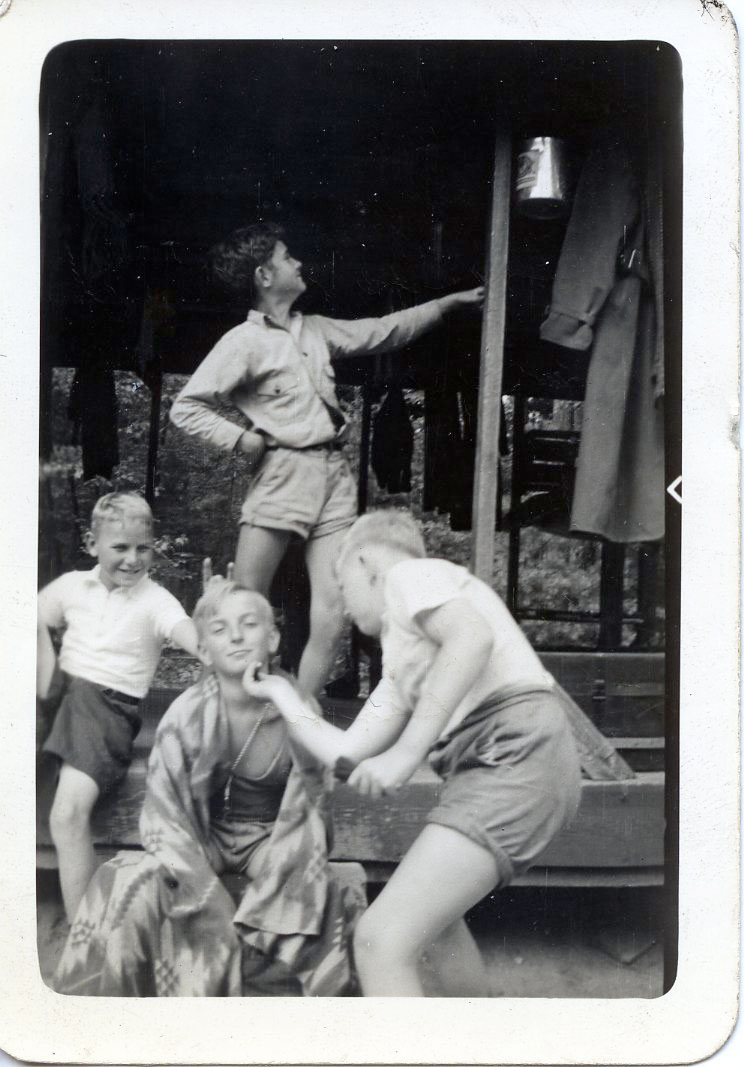
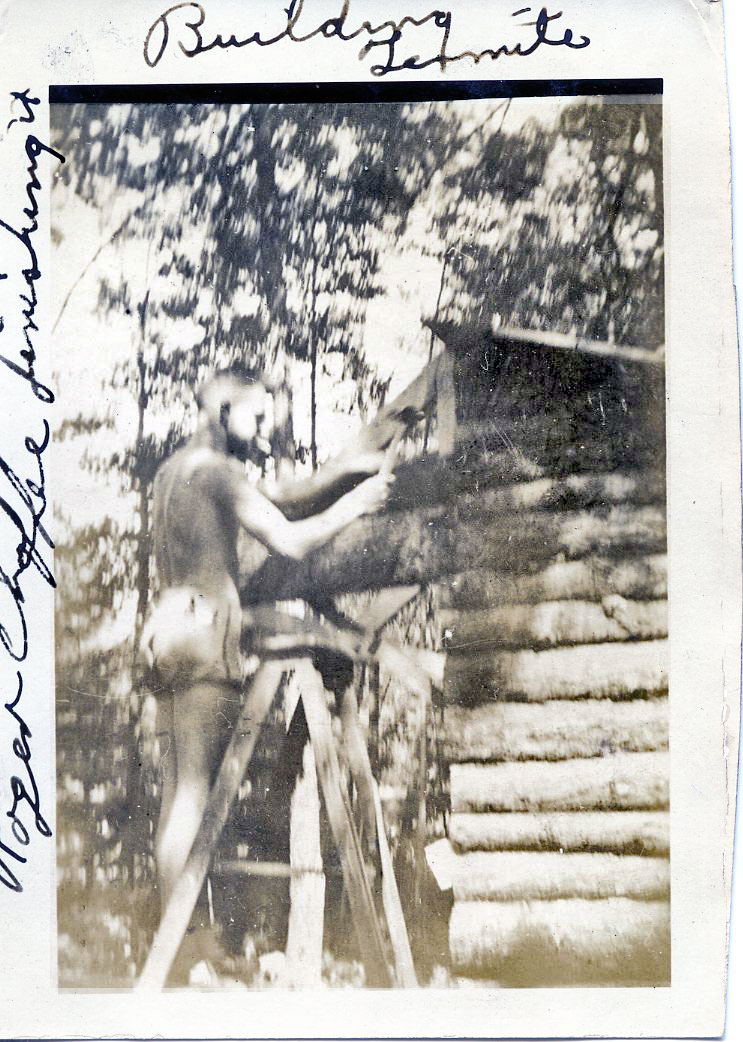
On the left is a picture of a collection of craft work done by the campers; link belts, war clubs, model airplanes, you name it, it was probably included. On the right, work is being done on an open front shelter which was to be the quarters for the trip counselor. This counselor had no responsibility for campers as did the other 12 except when they went out with him on overnight hikes or canoe trips such as the one to Sebago Lake.
To the middle, we were obviously clowning for the camera, for I needed a shave about as much as the day I was born.
Following below are an assortment of shots taken on the Sebago trip. The fellow on his knees is Clifford J. Hamm who was my primary side kick that year. The locks in the Songo River are pictured to the right of Clifford's picture. (He is also the one receiving nose drops.) And the last picture is that of tent twelve, counselor, campers, and junior counselor-me. The boy next to me is probably the one I helped overcome his fear of water and learn to swim.



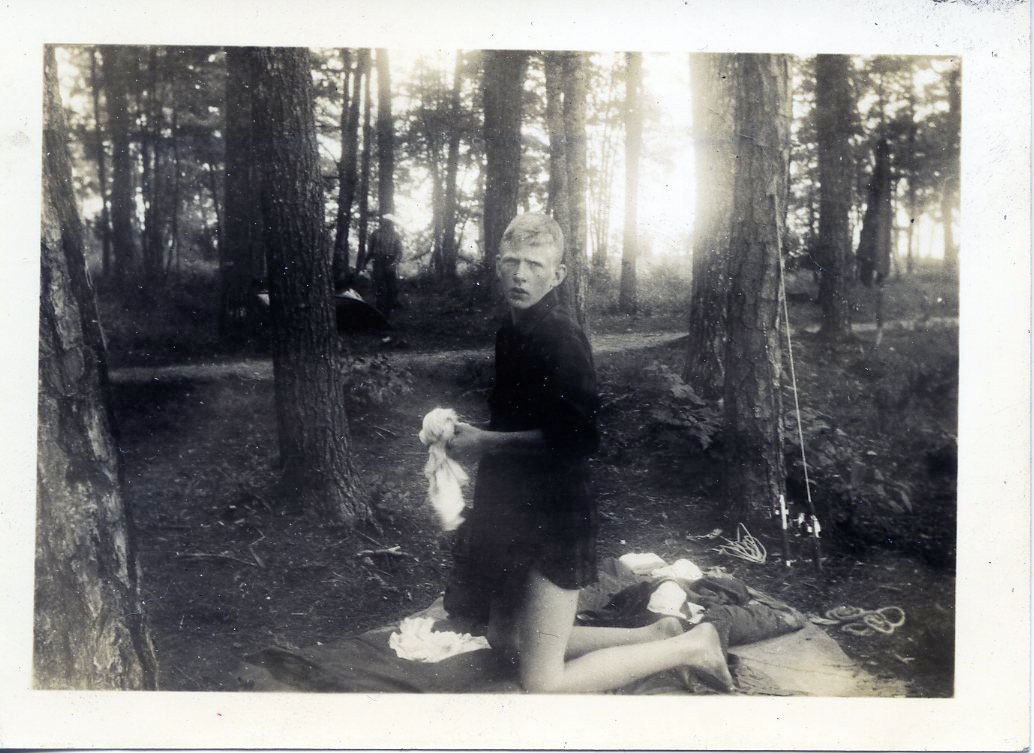
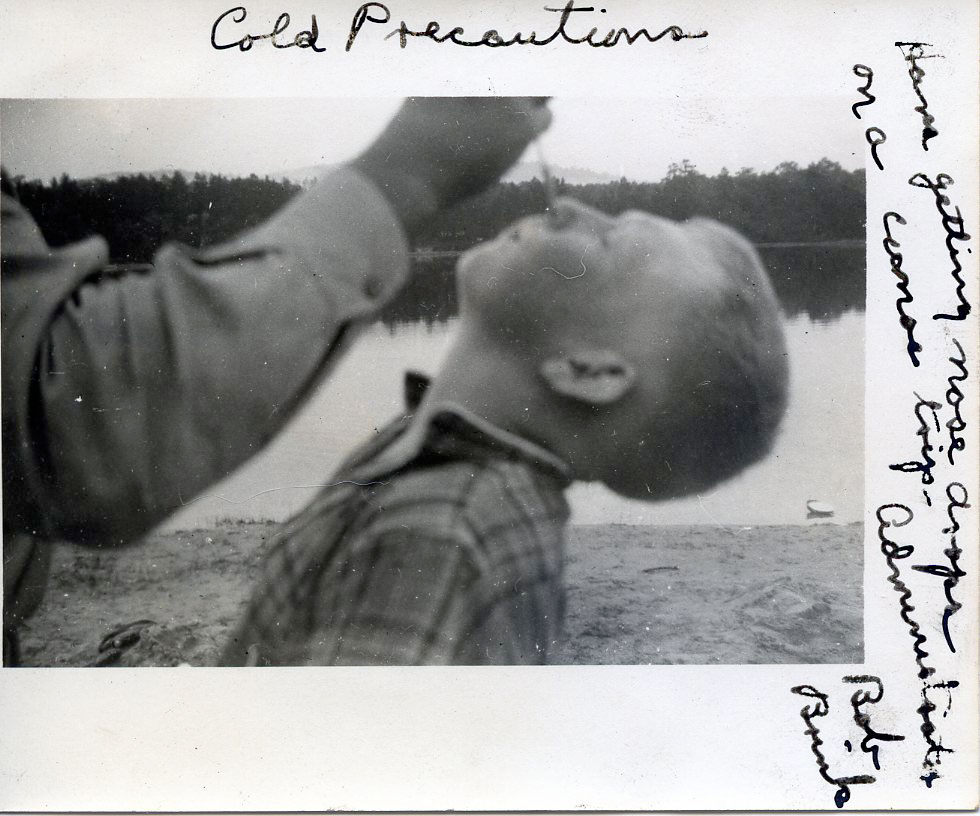
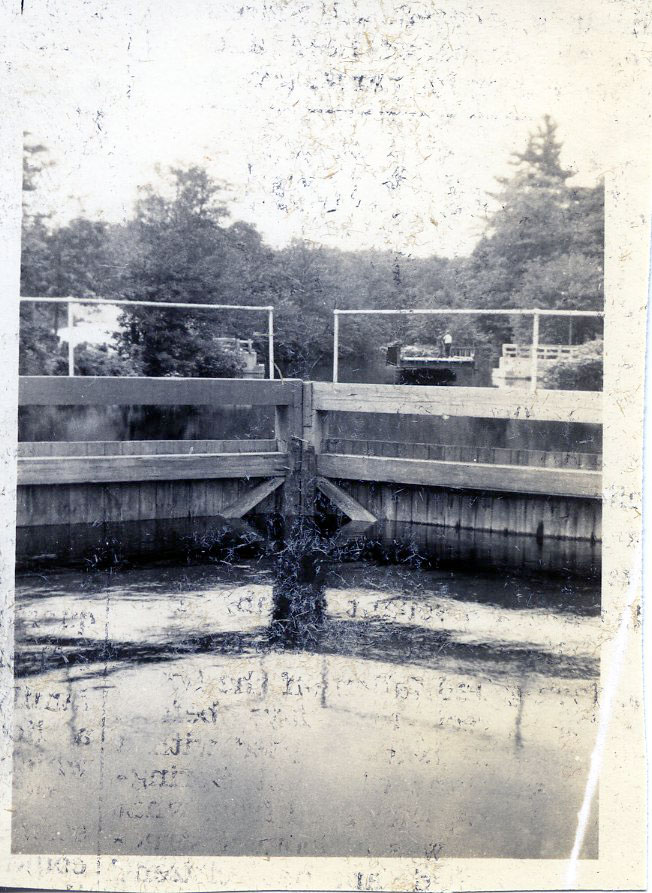

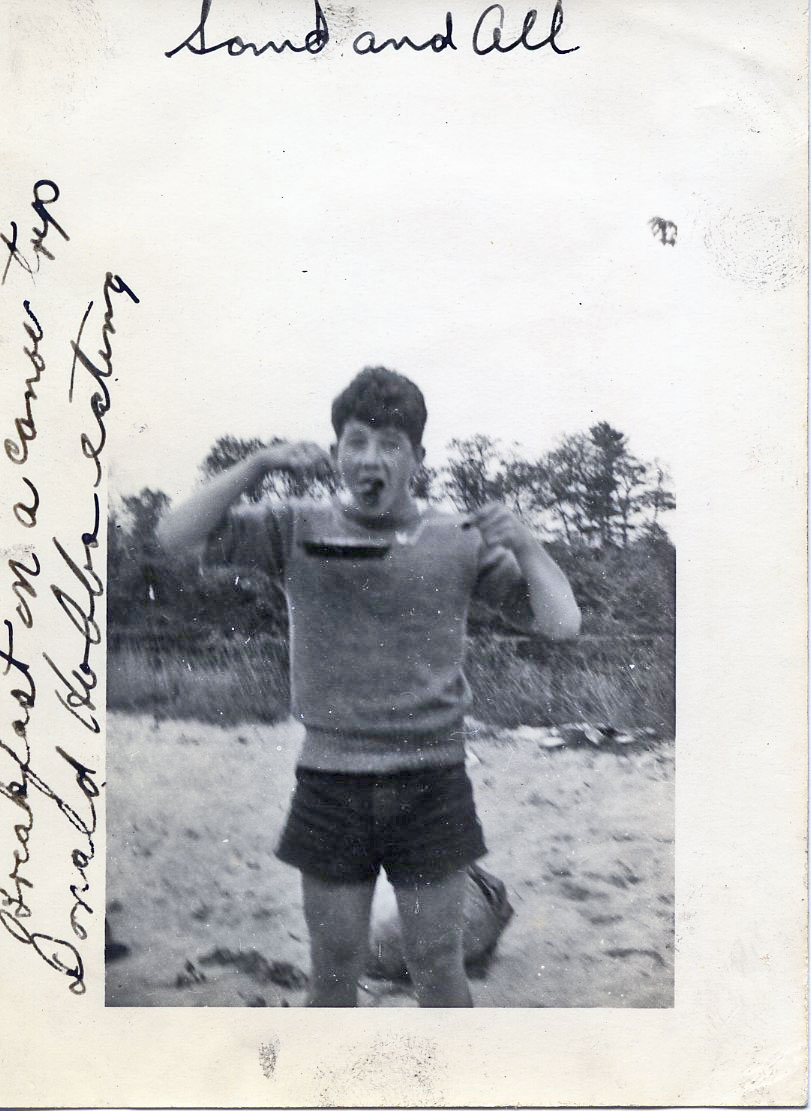

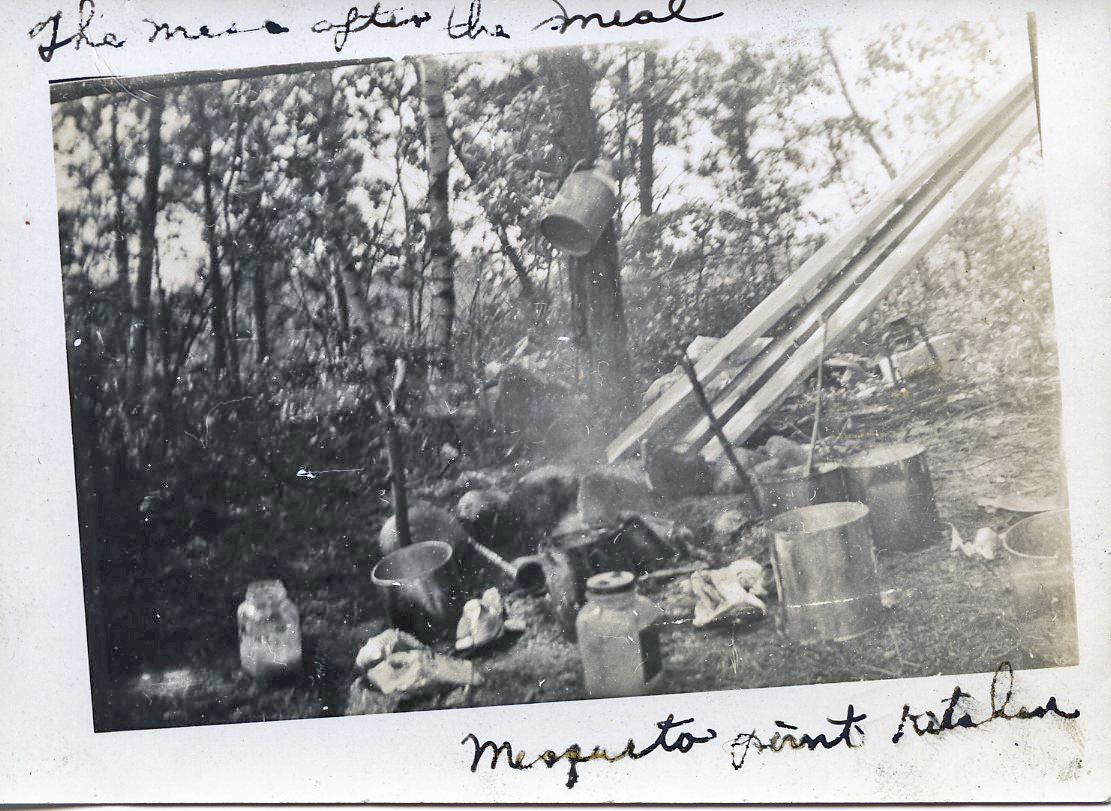
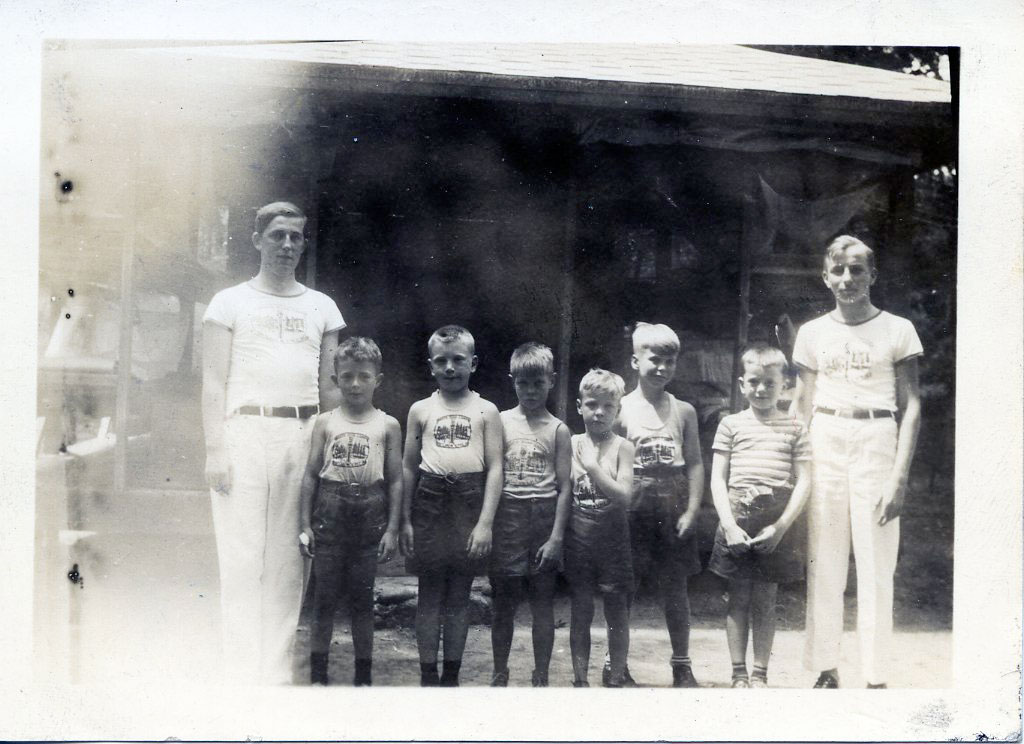
Link: PDF of original page